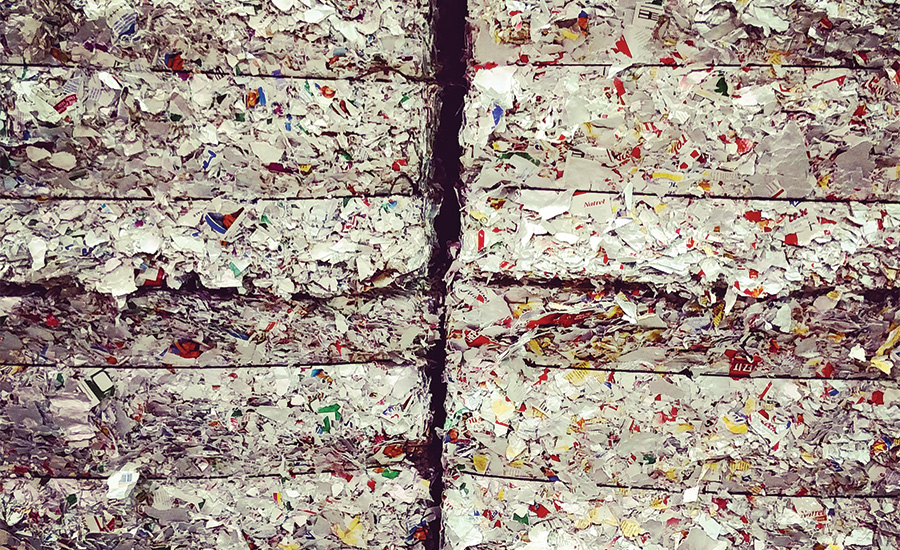By now you may be aware that recyclable food and beverage cartons are growing in popularity across the United States. In fact, carton recycling access has increased from 18 percent of American households to more than 58 percent of households in just the last seven years. That’s a 222 percent increase! Thanks to collaborative efforts led by the Carton Council of North America, nearly 68 million households are able to recycle their milk, juice and broth cartons through their residential curbside or drop-off programs.
the carton story
But what happens to cartons after they’ve been placed in the recycling container? It depends on the carton, which comes in one of two forms: shelf-stable (also called “aseptic”) or refrigerated (known as “gable-top”). Shelf-stable cartons are found on grocery store shelves and are used for things like juice, milk, soy milk, wine, soup and broth. Refrigerated cartons are found in the chilled sections of grocery stores and are used for milk, juice, cream and egg substitutes.
Cartons are made of the highest-quality virgin fiber available in the recycling stream: paper— a renewable resource with a low carbon footprint. Cartons also have a great product-to-package ratio. For example, if you buy a product in a carton, you are taking home an average of 94 percent product and only 6 percent package. In comparison, the weight of an egg shell accounts for 13 percent of total weight, while the egg white and yolk account for 87 percent.
Once cartons have been consumed and collected, they are sorted and baled at a materials recovery facility (MRF). After that, the most common option is for cartons to be shipped to a paper mill where they are mixed with water in a hydrapulper to separate the paper fiber from the other materials (plastic and thin layer of aluminum in the case of shelf-stable cartons). The fiber pulp is then ready for manufacturing new products such as printing and writing paper, tissues and paper towels. The residual aluminum and plastic can be further recycled or used for energy generation at the paper mill.
But there is another, newer option. Cartons are being shipped to a manufacturing company like ReWall, where the entire carton—caps and all—gets used. The cartons are shredded and press-melted into high-quality green building materials, such as roof cover board, exterior sheathing, moisture- and mold-resistant composite panels, ceiling panels, and wallboard and backer board.
Cartons have been a mainstream recycling material for decades in Europe. With the growing use of cartons here and the efforts of groups like the Carton Council to recover more of the valuable commodity, it’s starting to catch on stateside. And in 2011, ReWall opened a facility in Des Moines, Iowa, for its U.S. headquarters to use cartons for constructing green building materials.
quality construction products
The carton itself is manufactured from an inherently moisture- and mold-resistant composite material that is also extremely durable. These are all the same properties that builders look for when they want to build energy-efficient, high-performance and, most importantly, healthy buildings.
When producing sustainable products, it’s important that they are the same or higher quality than the standard option. No one will repurchase or recommend a green ceiling tile if it leaks. Also, it’s time to change the mindset that environmentally friendly products should cost more.
choose cartons, choose sustainability
Most importantly, it’s not just brands that are looking into sustainable options. The Carton Council released a study earlier this year revealing that 77 percent of consumers say they consider the effect of their purchases on the environment. And 91 percent of consumers say they expect food and beverage brands to actively help increase the recycling of their packaging. Today’s consumers are seeking out products and companies that offer sustainable options, which makes it good business sense to consider cartons.
As brand owners and packaging designers, you make decisions every day regarding the packaging for your products. When you choose cartons, you are not only choosing one of the most sustainable packaging options, but you are also choosing a package that can have a second life. Choosing cartons for your packaging means you are doing your part to extend their lifecycles in a beneficial way.
The Carton Council
The Carton Council is comprised of four leading carton manufacturers: Elopak, SIG Combibloc, Evergreen Packaging and Tetra Pak, as well as an associate member, Weyerhaeuser. Formed in 2009, the Carton Council works to deliver long-term collaborative solutions in order to divert valuable cartons from the landfill. Through a united effort, the Carton Council is committed to building a sustainable infrastructure for carton recycling nationwide and works toward a continual goal of adding access to carton recycling throughout the United States. For more information, visit www.CartonOpportunities.org.












